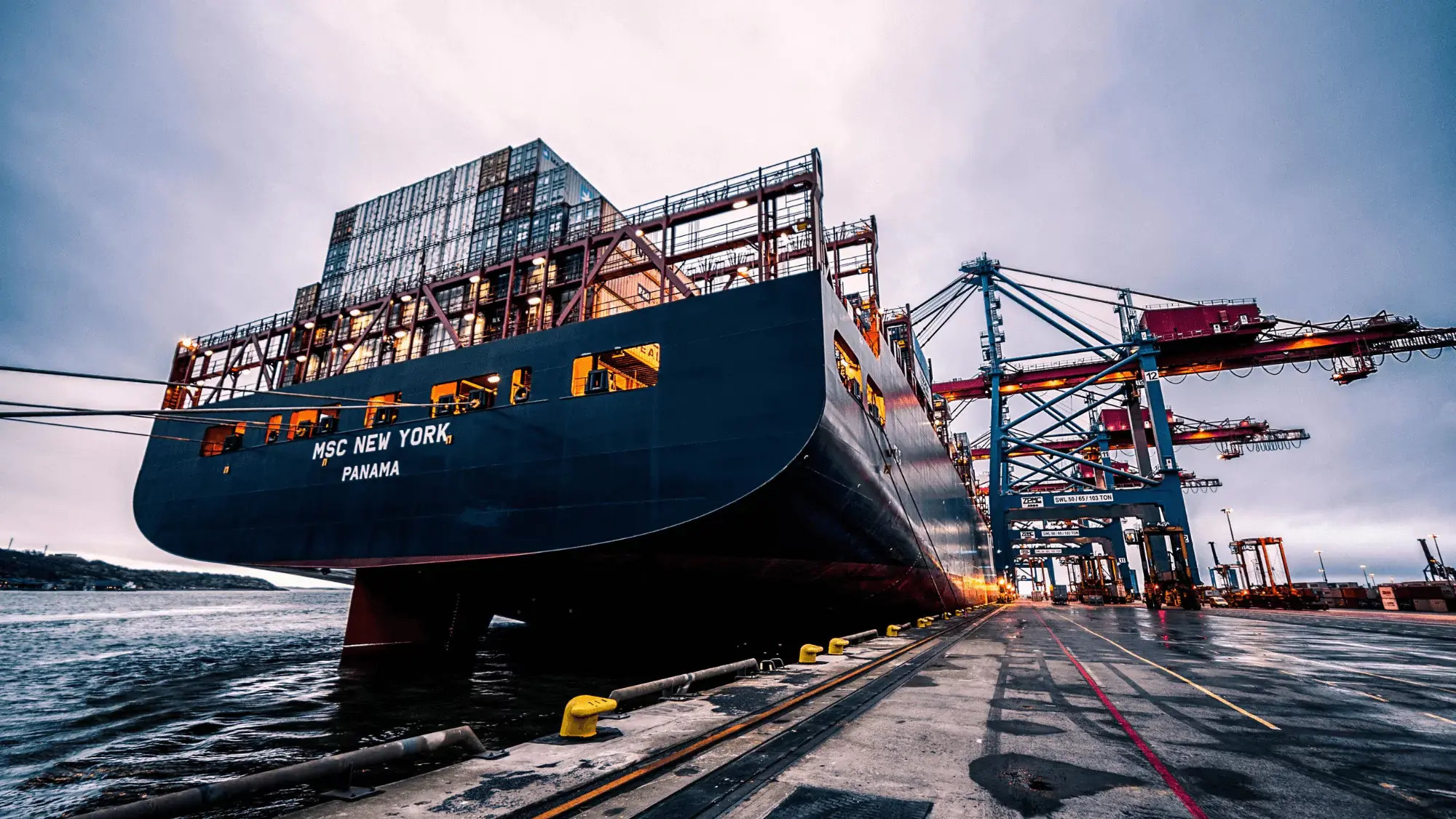
Unforeseen disruptions to your supply chain can have devastating consequences for your business, impacting your bottom line and jeopardizing your company's success. Inbound freight—the crucial process of transporting goods from suppliers—is particularly vulnerable to disruptions. From natural disasters and economic turmoil to supplier issues and transportation challenges, the dangers are abundant and often hidden in plain sight.
This blog will serve as your playbook for navigating three common risks and keeping your supply chain operating at peak performance.
The Risk of Tribal Knowledge
In any organization, there's a wealth of knowledge that exists outside of formal documents and training manuals. This "tribal knowledge" is the accumulated wisdom, experience, and insights held by long-time employees. It's the kind of information often passed down through conversations, observations, and on-the-job learning.
One often overlooked risk is the danger of "tribal knowledge" walking out the door. This refers to the unwritten, informal information that resides within the minds of experienced employees. It might include insights into which carriers consistently provide the best service for specific routes, the nuances of customs regulations for certain products, or even informal agreements with suppliers that expedite deliveries.
However, this valuable knowledge is at risk when experienced employees leave the company, especially through retirement. When a team member leaves, their wealth of knowledge could walk out the door with them. This can lead to a loss of efficiency, increased costs, and potential disruptions to your inbound freight operations.
Consider this example: A supply chain manager who has cultivated relationships with carriers over decades, securing preferential rates and priority service. They know which carrier is best for which vendor and why – expertise gained through years of experience. When that individual retires, that invaluable knowledge and those advantageous connections might disappear, likely leading to higher costs and unpredictable arrivals into production–ultimately, a logistics headache.
How to Protect Institutional Memory
So, how can you protect this valuable tribal knowledge?
-
Knowledge management: Implement a system for capturing and documenting key processes, best practices, and critical information related to inbound freight. This could involve creating standard operating procedures (SOPs), utilizing knowledge management software, or establishing mentorship programs to transfer knowledge from senior to junior employees.
-
Succession planning: Develop a clear succession plan for key roles within your logistics department. This ensures a smooth transition of responsibilities and minimizes disruptions when employees leave. Identify high-potential employees and provide them with opportunities to learn from experienced professionals before they depart.
-
Outsourcing to a 3PL: Consider partnering with a third-party logistics provider (3PL). 3PLs bring their own expertise and established processes, reducing your reliance on the tribal knowledge of individual employees. They can also provide access to a broader network of carriers and resources, potentially improving efficiency and reducing costs.
By taking proactive steps to preserve and transfer tribal knowledge, you can safeguard your inbound freight operations and ensure a smoother, more resilient supply chain.
The Ripple Effect of Change
Another hidden danger lies in the ever-shifting landscape of the freight industry. Regulations change, fuel prices fluctuate, new technologies emerge, and geopolitical events send ripples throughout the global economy. These factors can significantly impact your inbound freight operations, affecting everything from transportation costs and delivery times to carrier availability and customs procedures.
These constant changes can significantly impact your business in a multitude of ways. For example, a sudden surge in fuel prices can directly translate to higher transportation costs, squeezing your profit margins. New regulations regarding emissions standards or driver hours can limit your carrier options and impact delivery schedules. Even global events, like trade disputes or pandemics, can disrupt supply chains, causing delays and impacting the availability of goods.
Adapting to Change in a Dynamic Industry
So, how can businesses navigate this ever-changing landscape and ensure their inbound freight operations remain resilient?
-
Technology adoption: Embrace technology that provides real-time visibility and control over your inbound freight. Transportation Management Systems (TMS) can be invaluable tools, offering features like real-time shipment tracking, automated carrier selection, route optimization, and alerts for potential disruptions. Freight tech like TMS can also help you stay informed about regulatory changes, track fuel price trends, and analyze performance data to identify areas for improvement.
-
Data-driven decision-making: Leverage data analytics to gain insights into industry trends, identify potential risks, and make informed decisions about your inbound freight strategies. By analyzing historical data, you can identify patterns and anticipate potential disruptions. For example, analyzing data on past weather events can help you prepare for potential delays during hurricane season.
-
Flexibility and agility: Build flexibility and agility into your inbound freight operations. This could involve diversifying your carrier network to avoid reliance on a single provider, exploring alternative transportation modes like rail or intermodal, and having contingency plans in place to address unexpected disruptions.
By embracing technology, leveraging data, and prioritizing flexibility, businesses can adapt to the dynamic nature of the freight industry and ensure their inbound freight logistics remain efficient, cost-effective, and resilient.
Mother Nature's Impact on the Supply Chain
When it comes to inbound freight, Mother Nature can be a formidable adversary, disrupting even the most meticulously planned supply chains. Natural disasters—hurricanes, floods, wildfires, earthquakes—can strike with little warning, wreaking havoc on transportation networks and disrupting the flow of goods. These events can cause significant delays, damage shipments, and lead to substantial financial losses for businesses.
The impact of natural disasters on transportation capacity can be significant. For instance, a major hurricane can pull 3% of transportation capacity off the market, leading to delays and price surges as businesses scramble to secure alternative shipping options. Imagine a manufacturer relying solely on a single port for inbound shipments. If that port is forced to close due to a hurricane, the consequences can be severe, from production delays and lost sales to strained customer relationships.
Preparing for the Unpredictable
While you can't prevent natural disasters, you can take steps to mitigate their impact on your inbound freight operations.
-
Risk assessment and planning: Conduct a thorough risk assessment to identify potential vulnerabilities in your supply chain. Map out critical transportation routes and assess their susceptibility to natural disasters. Identify alternative routes and transportation modes that can be utilized in case of disruptions.
-
Contingency planning: Develop comprehensive contingency plans that outline specific procedures for dealing with disruptions caused by natural disasters. This includes identifying backup suppliers, alternative transportation routes, and communication strategies to keep stakeholders informed during emergencies. Regularly review and update these plans to ensure they remain relevant and effective.
-
Insurance and risk mitigation: Secure appropriate insurance coverage to protect your business from financial losses due to natural disasters. Explore risk mitigation strategies such as diversifying sourcing locations to avoid reliance on a single region and utilizing multiple transportation modes to reduce the impact of disruptions to any one mode.
By proactively assessing risks, developing robust contingency plans, and implementing appropriate insurance and mitigation strategies, businesses can navigate the unpredictable nature of natural disasters and safeguard their inbound freight operations.
Safeguard Your Supply Chain with Inbound Freight Management
Developing a comprehensive risk management strategy that accounts for potential disruptions, from natural disasters to shifts in the economic landscape, is no longer a luxury but a necessity. These are just a few of the hidden dangers that can disrupt your inbound freight operations, but by proactively addressing these risks, you can safeguard your supply chain, ensure business continuity, and maintain a competitive edge.
Ready to take control of your inbound freight and build a supply chain that can weather any storm? Connect with the experts at Customodal today and let us help you navigate the complexities of modern logistics.




